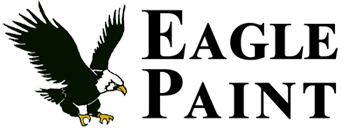Over time products evolve, markets change, technology advances, and more times than not the consumer benefits. Paint is no different. Today’s paint products have less odor, dry faster, require less prep work, and are easier to work with.
This blog series is one on historical paint, the products of yesteryear that served as links in the chain to get to where we are today.
Dutch Boy Pure White Lead Paint.

Do not adjust your monitor settings, it actually says white lead paint. The bottom of the can does in fact say “National Lead Company”, and the back of the can doubles down on the importance of the use of lead. Being honest I was actually hesitant to touch this can.
Here’s the question on your mind, let me answer that first: Why did we even use lead in the first place?
We need to understand that lead was the TiO2 of its day. That is to say, it was the premium ingredient of its day. Other things were fillers. In fact the product literature on this stuff showed the Dutch Boy Ads “calling out” other paint makers for not using enough lead. Today, such a thing seems as absurd as a packaged baked goods company calling out other firms for failing to use enough artificial sweeteners or failing to put enough trans-fats in their products! White lead had many uses, and it was really viewed as a reliable, trustworthy substance.
Mixtures
In “the old days”, one purchased this paint and other related products straight from the manufacturer. They would purchase this lead paint base, boiled linseed oil, and pure thinner. Sometimes driers were added, the compounds with labels that were very long, and raise alarm in safety conscious individuals. It was then mixed on site, usually in large drums, often times with un-gloved bare hands. If the visual of handling white lead and the mystery chemicals doesn’t seem problematic, please note that the smell was, in a word – atrocious.
Performance
Prepare to be wowed – It usually dried in somewhere around 3 days, if applied properly. Done incorrectly, the old “legends” lead us to believe that it may not dry at all. If it rained on one of those crucial drying days, you were in trouble. Adding driers was considered standard procedure by most self respecting painters. Whites, the two main whites available, usually darkened over time too.
The trade off, was the fact that white lead paint was the premium paint of its day. In the 1970’s, Kmart carried Dutchboy’s ~$10 paint, it was the most premium line they had. It also had truly incredible endurance under the right conditions. Lead paint had more or less been made extinct in the late 1970s via regulation, but to this day, some of our contractors are removing lead paint from older homes. It can last that long under the right conditions.
Color
There was a way to mix custom colors. It involved mixing on site, and again, more additives. One would manually add their tint.
Take a look below.
One would add the proper amounts listed on the back of this fan deck in order to get the desired results.
The fan deck’s range of colors was less than stellar by today’s standards. Considering the materials used, things like off-whites were extremely difficult, neigh impossible to make consistently.
My, how times have changed!






